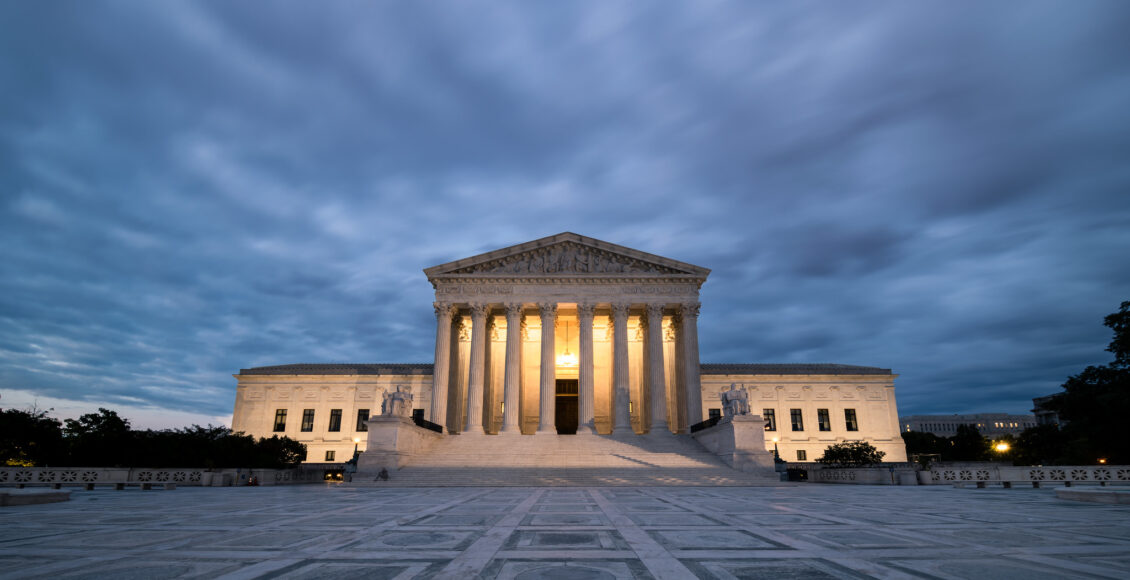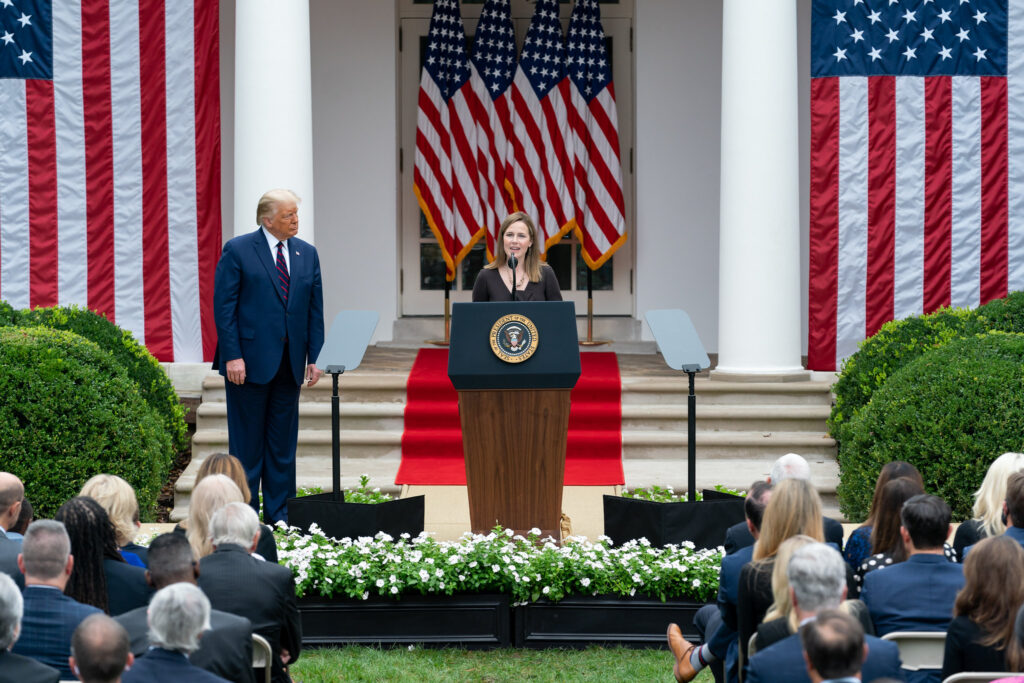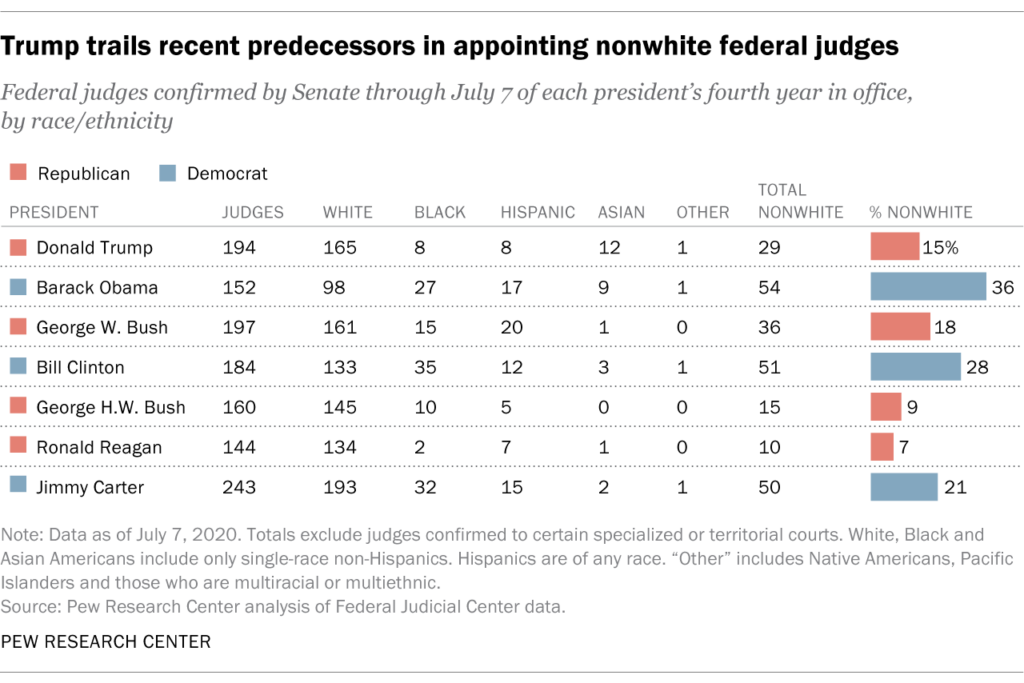The Degradation of Separate Powers

While it has been clear throughout the confirmation hearings for Supreme Court nominee Amy Coney Barrett that her record as a judge shows a personal and professional bias in line with the President’s hyper-conservative agenda, there are a host of other reasons why this nomination has been greatly controversial. Democrats have strongly ridiculed the Republican party for pushing the nomination through to confirmation hearings amidst an election and the COVID-19 pandemic. In particular, Democrats cite the precedent set by Republicans themselves in 2016, when they refused to begin SCOTUS nominee Merrick Garland’s confirmation process in the final year of the Obama administration. Proximity to an election is not reason in itself to delegitimize a SCOTUS confirmation hearing: after all, the strongly partisan climate of American politics in modern decades reinforces an active incentive for all Presidents to affirm their opinions through the courts. Here lies the more pernicious issue: a trend toward politicization of the courts has led to a degradation of the separation of powers, particularly obvious in the Trump administration’s disregard for the independence of the judicial branch.

Constitutionally, the American separation of the executive, legislative, and judicial branches was based on an understanding of the British Mixed Regime, whereby each branch was independent of the others and could therefore act as a check on power. By 1787, however, the American interpretation and application of such a system resulted in the blending of some responsibilities initially attributed to separate branches. Notably, this gave the executive branch veto power regarding legislation and the ability to appoint federal judges for the Senate to confirm as a means to involve the executive in legislative and judicial processes.
There is a clear reason why, if a President wanted to consolidate ideological uniformity during their tenure, the Trump administration has specifically targeted the judicial branch. Under the Constitution, all federal judges and Supreme Court justices serve for a lifetime, barring serious offences against justice or resignation. Therefore, a President is fully capable of reinforcing their ideologies through the executive branch’s right to court appointment, assuming their party holds a majority in the Senate. This is already questionable, given the inherent purpose of separate powers, but becomes a far more glaring issue when one looks at the sheer number of court appointments Trump has made in just one term.
In four years, Trump has appointed 53 appeals court justices, the most since Jimmy Carter. Justices in courts of appeal have a unique impact, compared to other federal judges, as they are the last court of appeal for most cases due to the limitations of the Supreme Court’s docket. Of Trump’s nominees, 85 per cent have been white and 25 per cent women, the former percentage being the highest since the turn of the millennia and the latter being the lowest.

This combination of responsibilities across the three branches has allowed for the political climate of the United States to severely impact the judicial branch, which should, theoretically, stand independent of the executive and legislative. The past century has seen a major slide in proximity between the legislative and judicial branch, with Congress relying upon the Supreme Court’s ability to exercise a broader power of judicial review to decide cases, such as Roe v. Wade, where the court protected a woman’s right to access abortions, but arbitrarily determined that trimesters within pregnancy would have implications on the legality of an abortion law. As a result of the expanding powers of the judiciary to not only determine the legality of policy matters but also to edit legislation, the politicization of the courts became inevitable. This has been particularly obvious throughout Trump’s first term, as nearly every blockbuster executive order, such as the Trump-labelled “Muslim-ban,” became matters of constitutional right or wrong for the Supreme Court to decide.
This politicization is pernicious, not only because it makes the separation of branches impossible, but because it has allowed for a reactionary offence of the executive, feeling empowered to encroach on its limitations and impact the courts. Particularly, this is evident in Trump’s suggestion, prior to nominating Amy Coney Barrett, that he would only appoint a judge that he believes would vote in alignment with his views on issues like the rolling back of the Affordable Care Act and abortion rights. A blatant disregard for the separation of powers, Trump’s actions are a direct reflection of the current state of interdependent branches, incapable of keeping the others’ power in check.
If Amy Coney Barrett got one thing right in her Senate Judiciary Committee hearing, it was that the Supreme Court ought not to create policy. There must be a further investigation into why the appellate process in itself is problematic, as the trend of the legislature depending on the judiciary to fix up their laws has become increasingly common.
To put it simply, access to the appellate process is closely linked to education and wealth. While there are organizations, such as the American Civil Liberties Union, which have resources to amplify the voices of minorities, it costs a great amount of time and privilege to be able to go through the appeal process. Generally, it requires that an individual have the luxury to take time off work, find an experienced and reputable lawyer, and a slew of other considerations inaccessible to those who are most impacted by unfair, unjust, or discriminatory policies. Furthermore, this limits the scope of conversation, when it concerns social progression, to the individuals with the privilege of attending prestigious institutions, also inaccessible to the most vulnerable minorities.
Evidently, there ought to be a discussion about what can be done to create a more proactive approach to revising and reconsidering policies, one which does not rely on the will of an increasingly apathetic people to appeal existing wrongs. Sunset laws, or sunset provisions, have historically been used to quickly pass legislation that is created due to pressing circumstances by setting a date after which the law is rendered void. The most commonly cited legislation including a sunset provision was the Patriot Act, which was intended to deal with the immediate security concerns following September 11, 2001. Some political scientists, however, argue that all federal statutes should “sunset” in order to allow Congress to re-evaluate their relevance, rather than relying upon individuals appealing specific issues. This process would push the legislative branch to revise policy matters — removing the burden that has fallen on the Supreme Court in recent years — as well as signify a return to a nonpartisan judiciary, and reinforce the separation of powers.
While the possibility of Amy Coney Barrett’s confirmation to the Supreme Court is of great concern to Americans who believe in protecting safe and legal abortions, the Affordable Care Act, voting rights, and more, all Americans should be critical of the Trump administration’s decision to repeatedly impede on the independence of the judicial branch and its effort to skew the courts in its own ideological favour. Divorced from one’s political views, all citizens living in a democratic society must believe in the separation of powers as a means of holding the government accountable. As James Madison famously wrote, “the accumulation of all powers, legislative, executive, and judiciary, in the same hands… may justly be pronounced the very definition of tyranny.”
Featured image “The Supreme Court” by Geoff Livingston is licensed under CC BY-NC-ND 2.0.
Edited by Sara Parker
